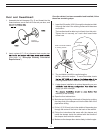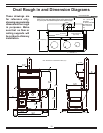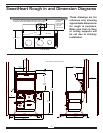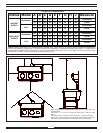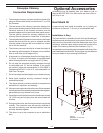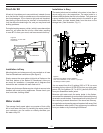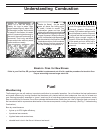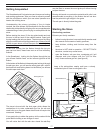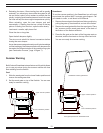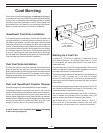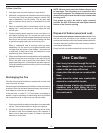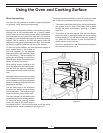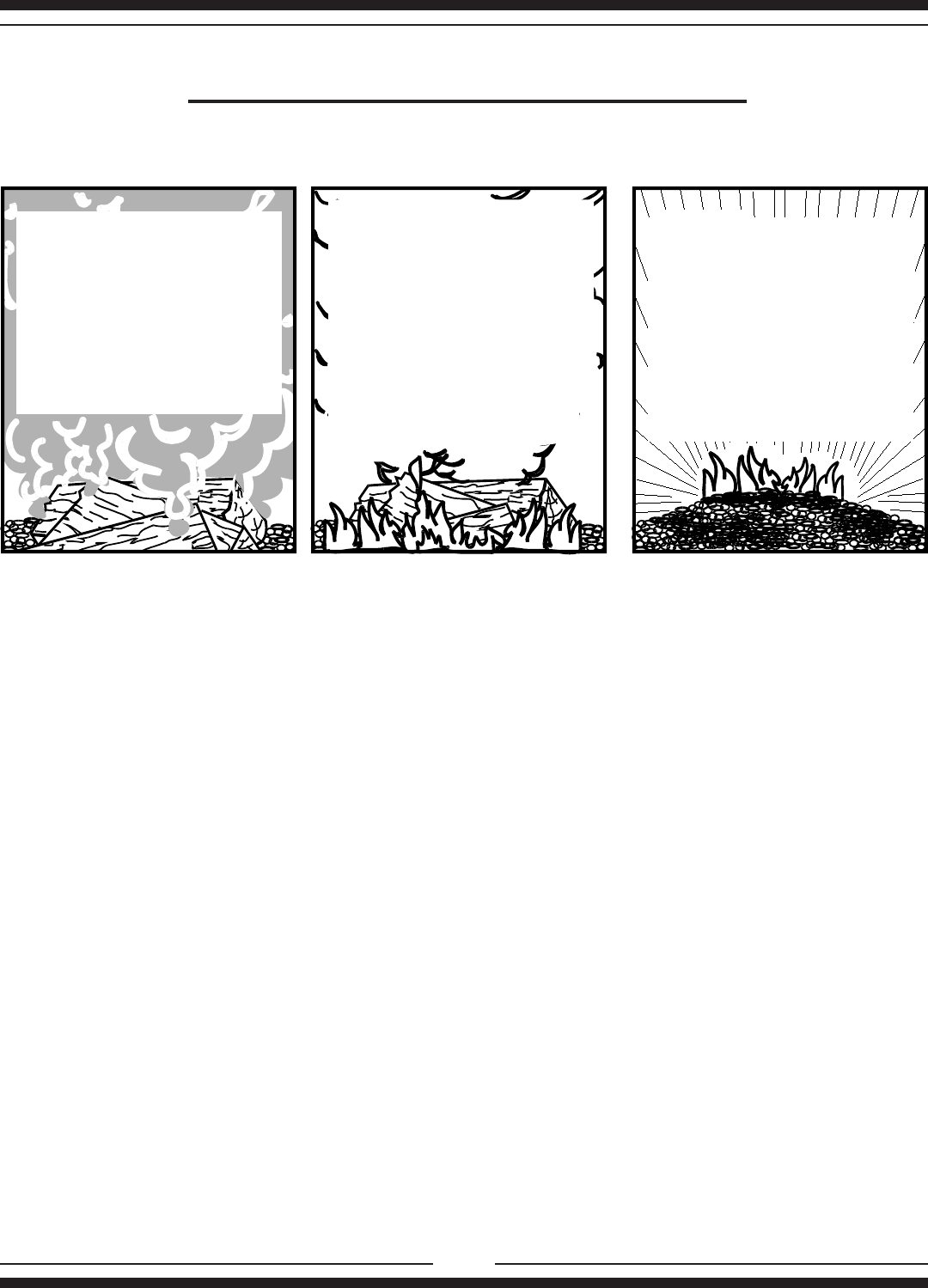
16
Charcoal: As the re progresses and
most of the gases have vaporized,
charcoal remains. Charcoal is
almost 100% carbon and burns with
very little ame or smoke. Charcoal
is a good fuel that burns easily and
cleanly when enough oxygen is
present. Of the total energy content
of the wood you burn, about half is
in the form of smoke, and half is
charcoal.
Water: Up to half the weight of
freshly cut logs is water. After
proper seasoning only about 20%
of the weight is water. As the wood
is heated in the rebox, this water
boils off, consuming heat energy in
the wood, the more heat energy is
consumed. That is why wet wood
hisses and sizzles while dry wood
ignites and burns easily.
Break-in Fires for New Stoves
If this is your rst re, OR you have installed a replacement set of brick, read the procedure for break-in res.
Proper seasoning ensures longer stove life.
Fuel
Woodburning
The rewood you use will make an important contribution to successful operation. You will achieve the best performance
and overall efciency by burning rewood that has been split, stacked and air-dried undercover from rain for at least one
year. Burning improperly seasoned or “green” wood can be a frustrating experience leading to poor performance, smoky
res and a build-up of creosote. Do not burn saltwater driftwood refuse, rubber tires, etc. Use of improper fuels can cause a
re hazard and lead to a premature deterioration of the stove components, voiding the warranty. (See Fig. 7 Understanding
Combustion.)
Burn dry wood because:
• it gives up to 25% higher efciency;
• it produces less creosote;
• it ignites faster and smokes less;
• valuable heat is lost in the re as it dries out wet wood.
Figure 7
Understanding Combustion
Smoke (or ame): As the wood
heats up above the boiling point
of water, it starts to smoke. The
hydrocarbon gases and tars that
make up the smoke are combustible
if the temperature is high enough and
oxygen is present. When the smoke
burns, it makes the bright ames that
are characteristic of a wood re. If the
smoke does not burn, it will condense
in the chimney forming creosote or
exit the chimney as air pollution.



